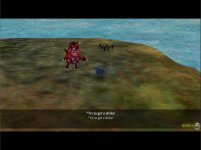Daniels118
New member
- Joined
- Jul 31, 2023
- Messages
- 17
Hi all,
this is my first post on this forum, so... nice to meet you all!
A brief introduction about me and B&W
I started playing B&W when I was a child, and I played the story mode again about 3 times over the years. The game mechanic is fantastic and the story too, but after playing it so many times it become a bit ovious. I always desired a new story to play, or even better write my own to share with others. Searching the web I've found 2 tools to compile and decompile the files used by the game to generate the story (scrolls), but they are very old, buggy, and lack some essential usage info. Since I'm an enthusiast programmer, about 2 weeks ago I contacted the developer of those tools who recently republished them to ask him for the source code so that I could eventually improve it, but unfortunately he losts the sources, so I decided to write my own trying to do better. And here it is!
Download and installation
I have published my work on GitHub under GPL, this way the source code won't get lost anymore:
https://github.com/Daniels118/blackandwhite
The binaries can be downloaded from the release section on the right, extract them and put the directory on the system variable PATH to be able to run it from everywhere.
Usage
Be sure to backup the original CHL file first!
CHL/ASM conversion
or
Compiling from CHL sources
The download contains a directory named "samples" which provides a basic setup.
The full syntax can be displayed by running the command without any argument.
Comments are welcome!
this is my first post on this forum, so... nice to meet you all!
A brief introduction about me and B&W
I started playing B&W when I was a child, and I played the story mode again about 3 times over the years. The game mechanic is fantastic and the story too, but after playing it so many times it become a bit ovious. I always desired a new story to play, or even better write my own to share with others. Searching the web I've found 2 tools to compile and decompile the files used by the game to generate the story (scrolls), but they are very old, buggy, and lack some essential usage info. Since I'm an enthusiast programmer, about 2 weeks ago I contacted the developer of those tools who recently republished them to ask him for the source code so that I could eventually improve it, but unfortunately he losts the sources, so I decided to write my own trying to do better. And here it is!
Download and installation
I have published my work on GitHub under GPL, this way the source code won't get lost anymore:
https://github.com/Daniels118/blackandwhite
The binaries can be downloaded from the release section on the right, extract them and put the directory on the system variable PATH to be able to run it from everywhere.
Usage
Be sure to backup the original CHL file first!
CHL/ASM conversion
chlasm -chlasm -i challenge.chl -p prjdir to convert from compiled CHL to assembly project; prjdir must exist.chlasm -asmchl -p prjdir/_project.txt -o challenge.chl to convert from assembly project to compiled CHL.or
chlasm -chlasm -i challenge.chl -o challenge.asm to convert from compiled CHL to single assembly file.chlasm -asmchl -i challenge.asm -o challenge.chl to convert from single assembly file to compiled CHL.Compiling from CHL sources
chlasm -compile -p prjdir/_project.txt -o challenge.chlThe download contains a directory named "samples" which provides a basic setup.
The full syntax can be displayed by running the command without any argument.
Comments are welcome!
Last edited:

